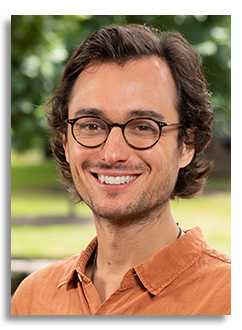
Abstract
Australia is the global leader in per capita rooftop PV system installations as more than 40% of homes own a system with over 25 GW of total installed capacity. Rooftop PV offers cheap and clean energy to society however, integration of high levels of rooftop PV has brought challenges such as minimum demand, over-voltage problems and curtailment experienced in low voltage networks. The existing network solutions proposed to manage these issues may be complex, costly and curtail PV generation. This can limit the financial and environmental benefits that can be gained from rooftop PV.
A simpler, yet more effective solution for integrating higher levels of rooftop PV is to use the flexible demand of domestic electric water heaters (DEWH) by shifting it to PV generation periods during the day. DEWH includes two main types: resistive (R-DEWH) and heat-pump (HP-DEWH) and more than 50% of Australian households have a DEWH which makes up a significant demand in the network. DEWH storage tanks offer thermal storage capacity, often larger than popular household batteries and can store excess PV generation in thermal energy form. This solution has the potential advantages of reducing power bills for consumers by using low-cost solar energy, reducing PV curtailment in the network, and mitigating other challenges associated to integrating higher levels of rooftop PV. Moreover, the penetration of smart meters across Australian households with PV is close to 100%, across the whole National Electricity Market (NEM) current penetration is around 30% and all households are expected to have a smart meter by 2030. Smart meters provide visibility and can control electrical loads in near real-time. As a result, smart meters are ideal technology to control the flexible demand of DEWH.
This talk will cover various aspects of flexible DEWH demand including detailed thermal modelling, comparing financial and environmental aspects of different water heating technologies, coordination, and control of large number of DEWH, network impact of flexible DEWH demand and forecasting of day-ahead aggregate DEWH demand as informed by two recent real-world operational trials:
ARENA - Plus ES South Australia Flexible Demand Trial
https://arena.gov.au/projects/plus-es-south-australia-demand-flexibility-trial/
and
RACE for 2030 SolarShift Project (Endeavour Energy Off-peak + Trial)
https://www.racefor2030.com.au/project/solarshift-turning-electric-water-heaters-into-megawatt-batteries/
Click here to see all available video seminars.
Click here to go to the SPREE HOMEPAGE.
Brief Bio
Dr. Baran Yildiz is a Senior Lecturer at the School of Photovoltaic and Renewable Energy Engineering (SPREE), UNSW. Barans research is multi-disciplinary and involves collaboration with the key industry partners of Australian energy sector. His research focuses on the integration of consumer energy resources (CER), and he is currently leading ARENA Project CICCADA - https://arena.gov.au/projects/unsw-project-ciccada-consumer-energy-resources-integration-compliance-and-curtailment-assessment-and-data-analysis/ Baran’s research has been translated into real-world products benefiting energy users and made policy impact by leading rule changes in Australian Energy Market Commission (AEMC). His research outputs are regularly cited by key industry reports and featured by leading media channels.
CEEM
The Collaboration on Energy and Environmental Markets at UNSW Sydney
The UNSW Collaboration on Energy and Environmental Markets (CEEM) undertakes interdisciplinary research into the design, analysis and performance monitoring of energy and environmental markets and their associated policy frameworks.
CEEM brings together UNSW researchers from the UNSW Business School, UNSW Engineering, and UNSW Arts, Design & Architecture, working alongside a growing number of Australian and international partners.
Click Here to go to the CEEM website https://www.ceem.unsw.edu.au/
